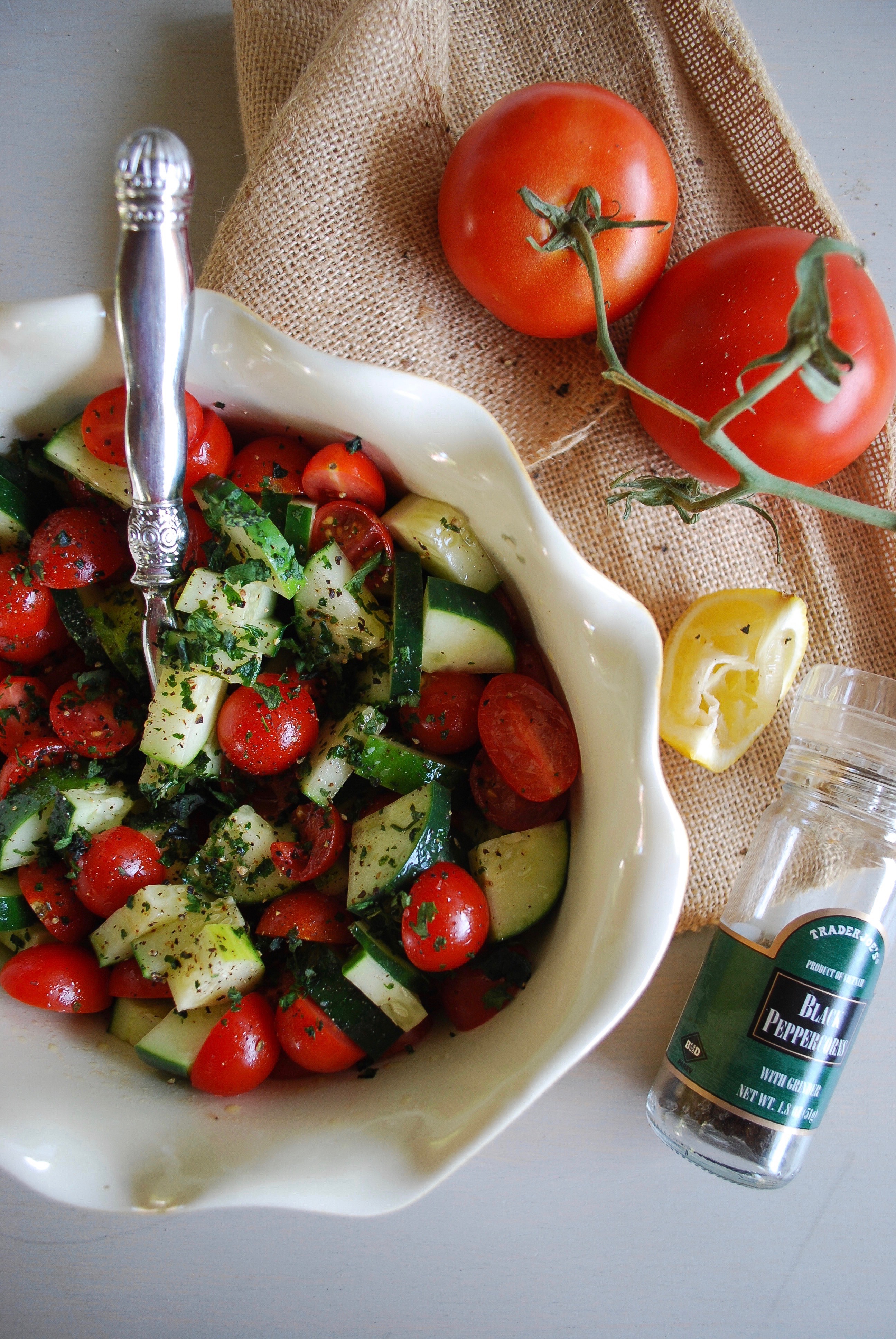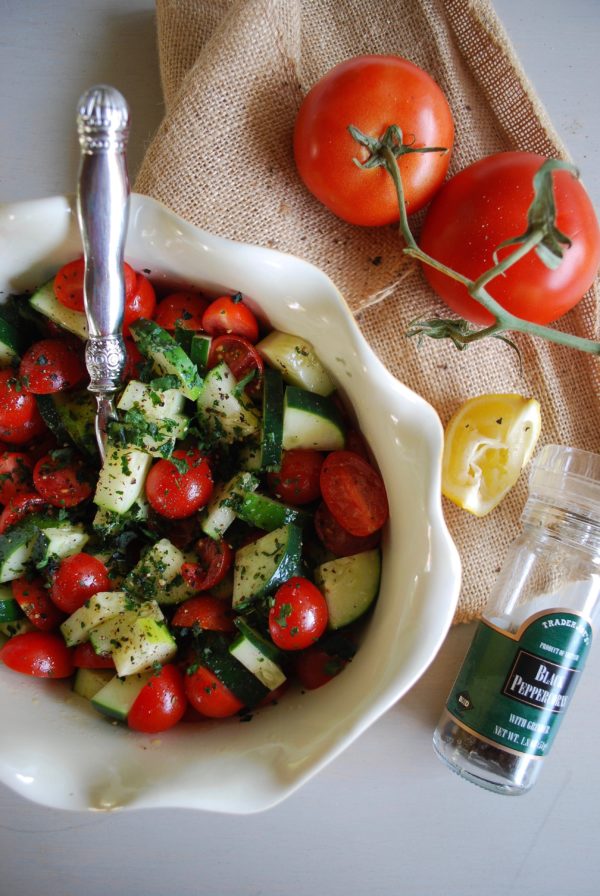Dearest summer veggie lovers,
As our summer season quickly draws to a close, I thought to myself, “What better way to celebrate than to create a lil’ salad to share with two of my favorite in-season foods?” (and also use the *what seems like* 5,000 tomatoes that one of our friends so graciously shared from his garden)…
Anywho, this quick & simple recipe is a stellar way to spruce up any meal with a dose of micronutrient-dense color and fresh flavors. My favorite uses for it are:
- A topping on a green salad or a grain bowl
- A side dish for end-of-summer cookouts
- A perfect snack when paired with a few crackers and/or a slice of sharp cheese
- ….but really, get creative here because these flavors go well just about any place your heart desires (unless that place is oatmeal–it probs wouldn’t the perfect fit there, but hey, if you’re feeling adventurous…be my guest!)

Before we get to the bulk of the recipe (pun totally intended, because #fiber), let’s talk about the nutritional highlight:
Tomatoes
Tomatoes are technically a fruit. However, that’s a discussion we’ll leave off the table today (I’m a dietitian, not a botanist).
What we will talk about, though, is how tomatoes are a great source of water, vitamin C, potassium, and lycopene. Lycopene is a carotenoid that is responsible for the bright red color of some fruits and veggies (think: tomatoes, watermelon, grapefruit, etc.).

Not only is lycopene cool for its attention-grabbing color cloak, but it is also a powerful antioxidant that has been researched for its ability to protect healthy body cells from the oxidative damage of those angry, unhealthy cells that we like to call “free radicals.”
This antioxidant power can help to protect the body from chronic diseases like cancer. In fact, the host of research on lycopene (there’s a lot) indicates that it may play a role specifically in the protection against prostate and breast cancer. Although more research is needed to satisfy the exact how?, why?, and how much? questions, it’s still pretty darn cool!
Increased lycopene intake has also been associated with reductions in the risk for cardiovascular disease (CVD), as well as improvements in biomarkers associated with CVD1. (I think my heart just skipped a beat!…in a good way..)
Lycopene is lipid soluble, meaning that it likes fat and is most available for absorption by the body when eaten with a fat source. For that fun reason, I’ve intentionally included olive oil in this recipe. However, you could also use another oil of choice and/or a few sprinkles of cheese.
I think that’s enough science talk for now–have I convinced you yet? I sure hope so! I love this recipe from my head tomatoes (…read it slowly and you’ll see what I did there..) & I hope you will too.
Yours Chewly,

P.S. I also recorded a video when making this recipe. If you’d like to check out that version, check it out here on IGTV!
Sources & additional readings on lycopene:

| Prep Time | 10 minutes |
| Servings |
people
|
- 1 ea. Cucumber -Large
- 2 cups Cherry tomatoes -Halved
- 2 Tbsp. Fresh cilantro -Chopped
- 1 ea. Lemon -Juiced
- 4 Tbsp. olive oil
- Salt & Pepper -To taste
Ingredients
|

|
- Begin by washing the cucumber and tomatoes. Slice the tomatoes in half. Quarter the cucumber into spears and chop each spear into small, bite-sized pieces. Combine in a medium-sized mixing bowl.
- Pour in lemon juice and olive oil. Sprinkle in a small amount of salt and pepper and toss gently.
- Place in serving bowl and sprinkle with fresh cilantro. Light, crisp and refreshing for all!
